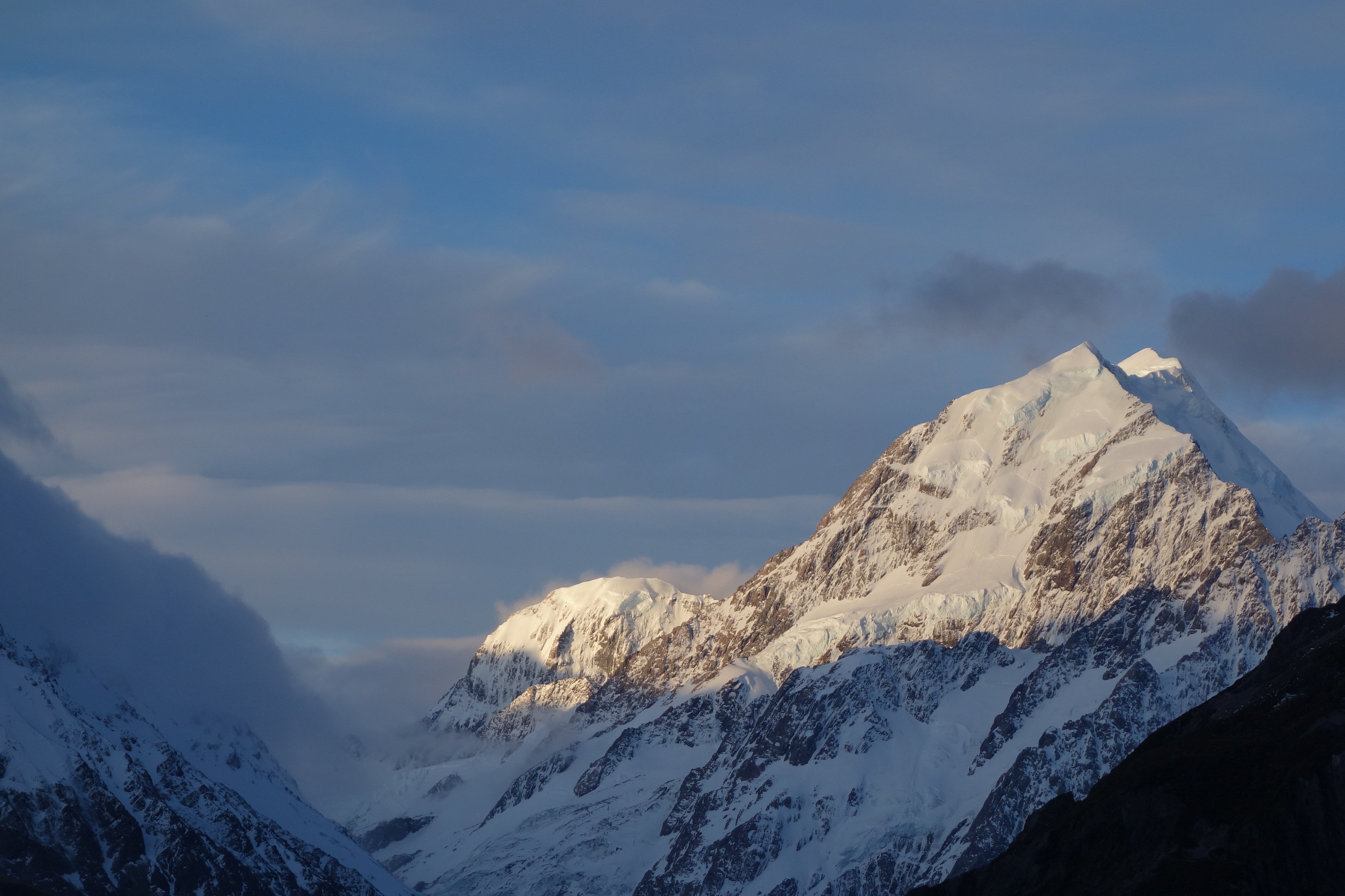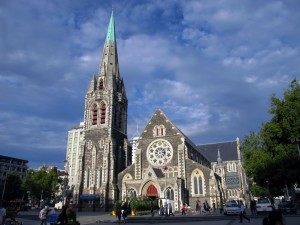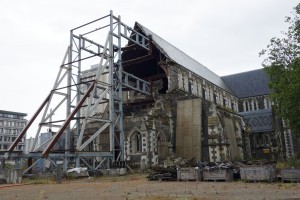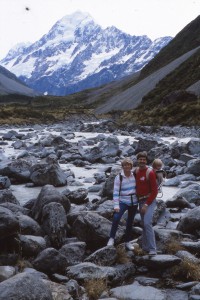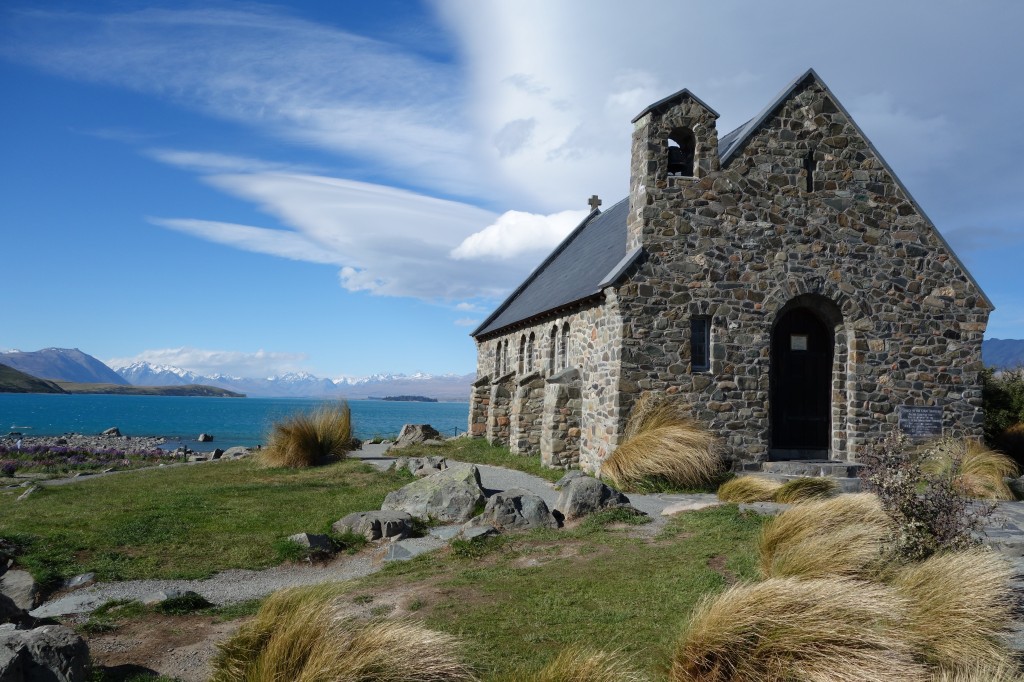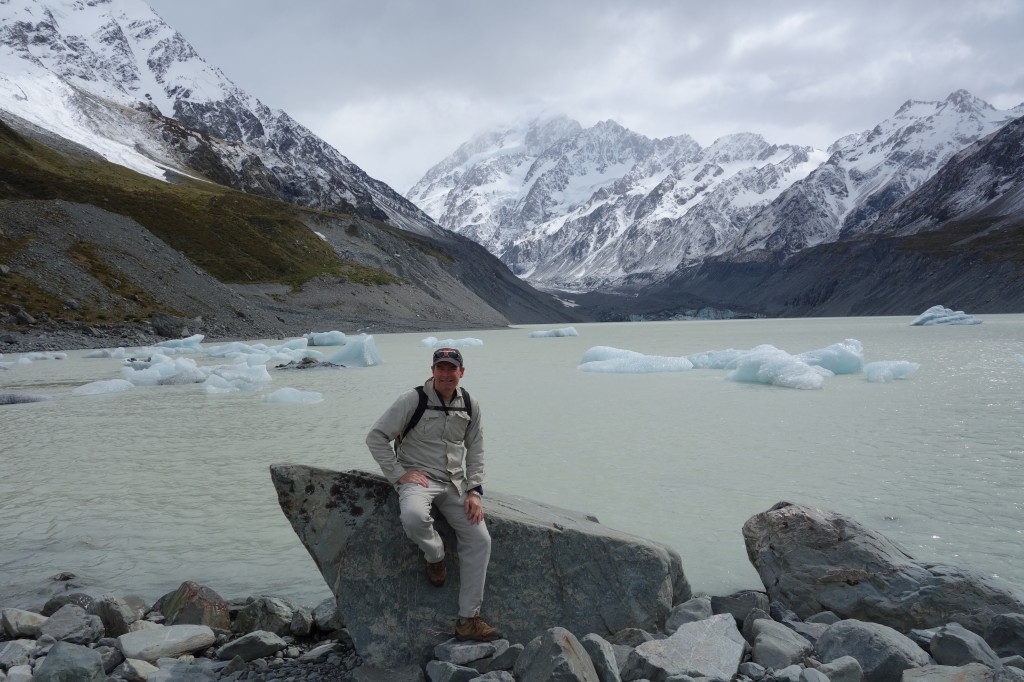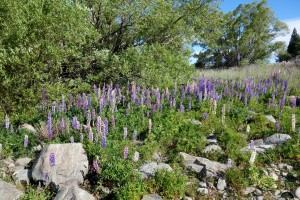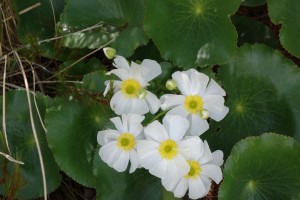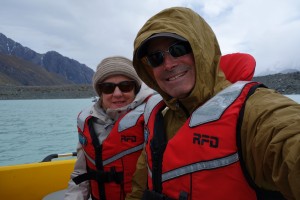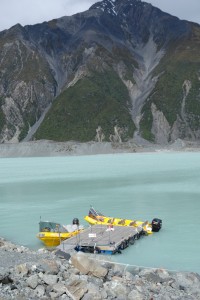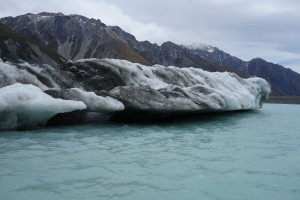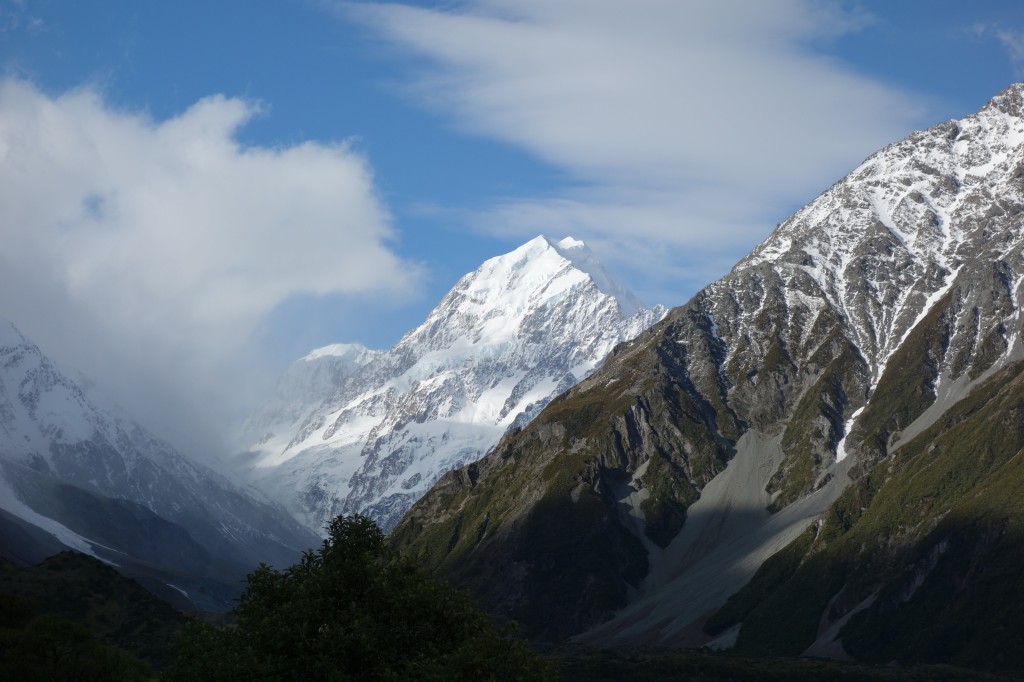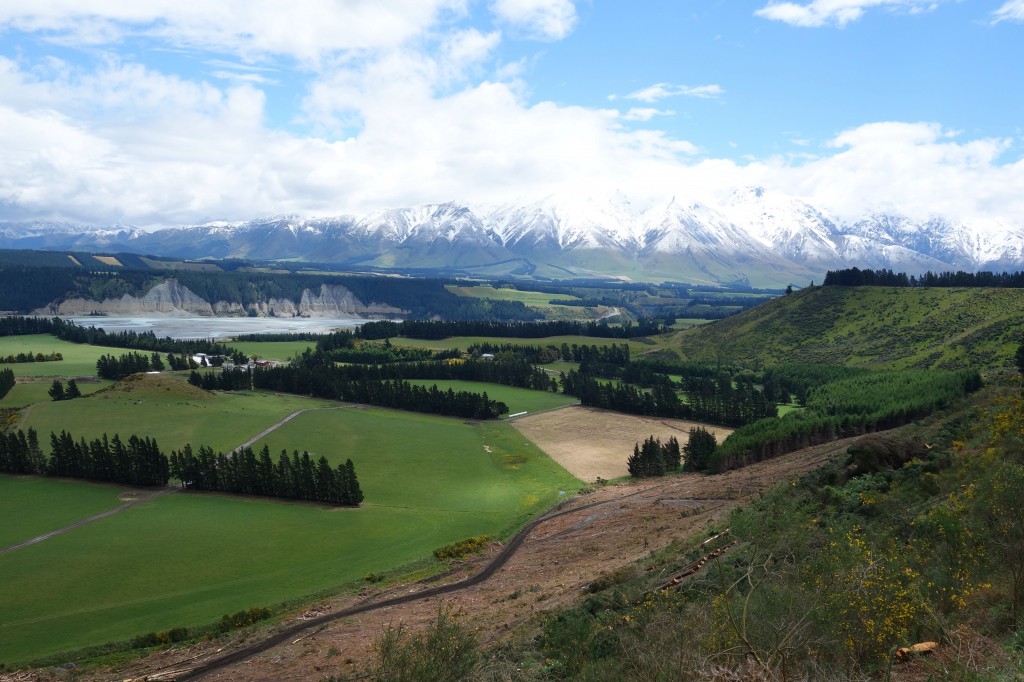Canterbury Tales
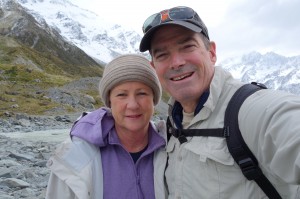
Taking in the fresh air at the foot of the Hooker Glacier with magnificent Mt. Cook in the background
They call them the Shaky Isles and with good reason. New Zealand endures thousands of earthquakes every year and while most of them are fairly minor they still represent a defining element of life there. These days any visitor to the beautiful city of Christchurch on the South Island can see first hand the destructive capabilities of a major earthquake after they were hit with large back-to-back quakes in September 2010 and February 2011. But it is also obvious, as we saw on a recent visit there, how resilient these people are and how they have gone about rebuilding their city and their lives.
Julie joined me in Christchurch following some business I had there and we turned it into a long weekend to explore this city of over 300,000 and the surrounding province of Canterbury.
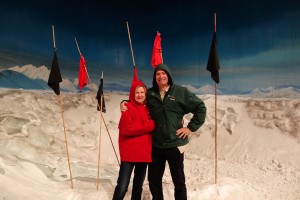
We visited the International Antarctic Centre in Christchurch and briefly enjoyed -10 degree weather
We hired a car and drove south through some beautiful rolling countryside with green fertile fields, usually inhabited by herds of fat cattle and sheep lazily enjoying the tall grass and warm sun.
Our target for the weekend was Aoraki/Mt. Cook National Park, about a four hour drive south of Christchurch. We were keen to be surrounded by the stunning mountains of the southern Alps, explore the walking trails, take in the glaciers and breathe what has been described as the cleanest air in the world.
But we were also revisiting old haunts. Julie and I have been here with my parents and our little baby Anna almost 28 years ago. On that trip Anna enjoyed the walks up the glacial valleys in the comfort of my backpack and had to stay on the ground with Momo while Julie and I enjoyed a stunning a scenic flight in a tiny little single prop plane over the Hooker and Tasman glaciers.
The highlight of the weekend this time was a four hour return walk up the Hooker Valley to the cloudy glacier lake at the base of the Hooker Glacier. Dominating the valley from just beyond the glacier was magnificent Mt. Cook, at 3,724 metres (12,200 feet), the highest mountain in New Zealand. Mt. Cook is a classically beautiful high alpine mountain with its steep jagged sides, numerous hanging glaciers and sharp pointed summit. We loved being in its presence and might have taken a photo or two when the clouds granted us permission.
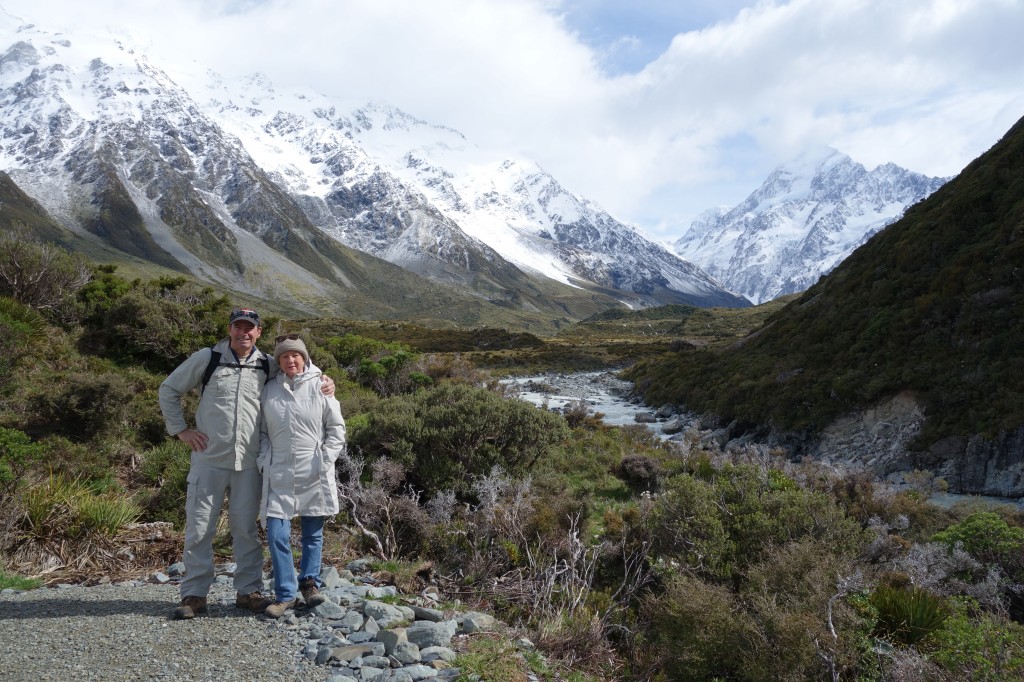
We’re rugged up against the cold but the views all around us were breathtaking – see Mt. Cook in the background
The village of Mt. Cook is nestled amongst numerous 3,000 metre snow-capped peaks and most of the accommodation options offer stunning views up the valley to Mt. Cook itself. We stayed at the upmarket backpackers hotel which featured all the creature comforts one could ask for, including a lively bar, great food and huge windows to soak up the amazing views.
One afternoon we joined a group to ride in specially designed boats on the Tasman glacial lake at the foot of the Tasman Glacier. This was great fun, whisking across icy cold waters, inspecting at close range various icebergs that had recently calved off the glacier (I mean, very close range, we were touching them and breaking off chunks of 600 year old ice) and getting as close as safe to the face of the Tasman Glacier.
Glaciers are an amazing force of nature, carving huge canyons and valley from solid rock,moving forwards or backwards, leaving behind a wake of total destruction and amazing beauty. As the glacier carves up rock the broken pieces become embedded in the ice, sometimes for hundreds of years, until they are finally released in the form of unconsolidated rock and soil called moraine. And in these glacial-formed valleys moraine, both ancient and relatively recent, seems to be the defining feature of the land around us.

Moraine captured in the glacier and carried out by the ice berg forms a beautiful marble effect in the ice
Julie and I were fascinated with the comparison of these glaciers and icebergs to what we saw in Antarctica (sorry, name dropping) six years ago. In Antarctica the ice carried almost no soil or rocks so were very clean, sparkling white/blue and icy. The icebergs and glaciers at Mt. Cook were very ‘dirty’ in that they carried substantial dirt and rocks in them, sometimes as large as a suitcase. The patterns of this debris in the icebergs gave them quite a beautiful marble effect.
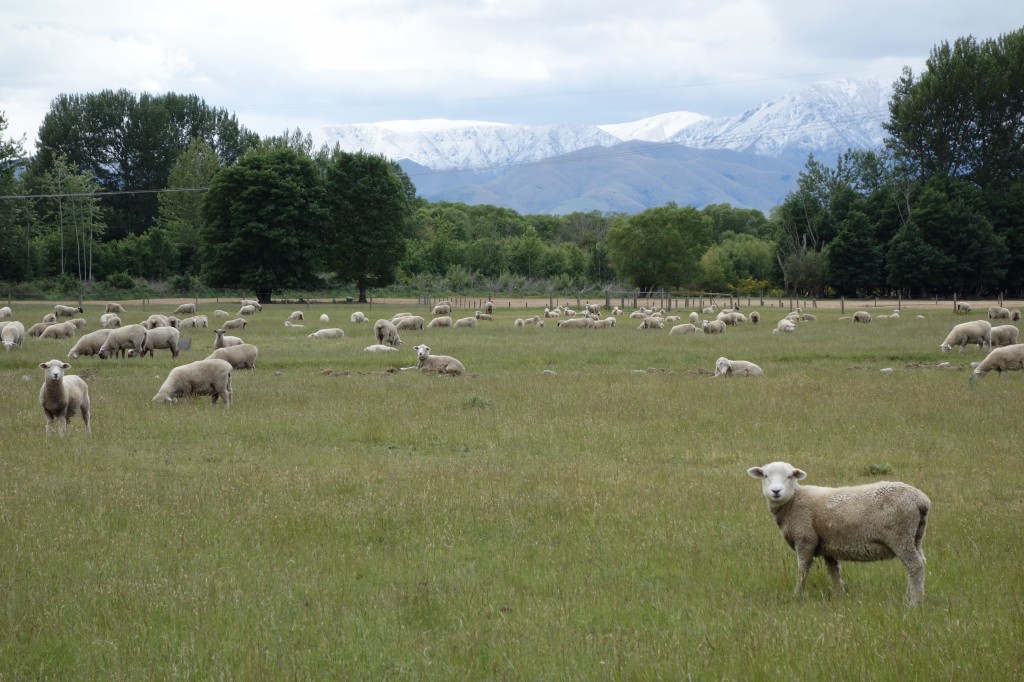
Quintessential New Zealand scene – sheep in the foreground with snow-capped mountains in the distance
With probably a month of more exploring to do in the province of Canterbury we sadly had to pull the plug after only a couple of days and race back to the Christchurch airport and return to reality. But mountains have a strong pull on us and we spent that beautiful drive back to the city contemplating our next trip here and to explore more of the Shaky Isles.
